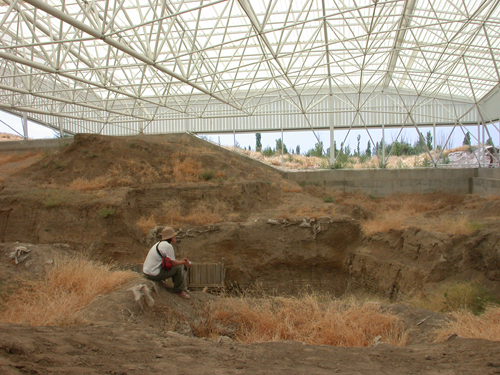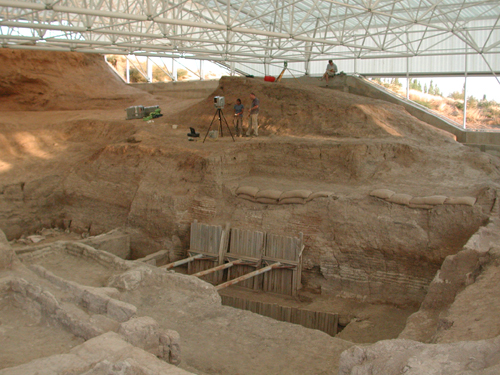EXCAVATION OF THE SOUTH AREA
Shahina Farid
The South Area shelter project for which the foundation trenches were excavated in 2002, was finally completed in February 2003. Therefore it was with great excitement that the team involved with this particular project arrived at the site to see the shelter in its complete state for the first time. Neither the plans nor the images taken during its construction over the winter months had prepared us for the enormity of the project in its complete state. The shelter has created a wonderful even light and a protected environment for excavation, conservation and public display. For the design and the work the project is very grateful to Ridvan Övünç, Sinan and Didem Omacan and Ceren Balkir of Atölye Mimarlik, Istanbul.
The new South Area now incorporates the Summit Area which has been renamed the South Summit Area. Aims to reopen excavations now covered by the new shelter that have not been worked on since 1999 (and South Summit since 1997), were held back as the season had been reduced in time and size. Instead resources were concentrated on preparing the newly-covered larger area for excavation and presentation in 2004. This involved clearing vegetation and erosion built up since 1999 and 1997, removing sand (soil) bags which were used to protect the excavated areas up to 1999, and a thorough cleaning with trowels of the exposed sections and wall faces for better presentation to the public (Fig. 17). Small-scale excavations were resumed in Building 10, South Summit, after five long years, in order to bring the building into a single phase of occupation. Plans for visitor accessibility into the area were also discussed with Atölye Mimarlik and designs of wooden platforms and steps are currently underway. Some temporary measures for accessibility were put in place and a reconstruction of the ‘volcano painting’ found by Mellaart was produced and erected in as close to its original location as possible (see p. 17).
A portable Cyrax® 3D Laser Scanner was used in a small test section in the South Area. As time was short, this work was conducted at night but nonetheless successfully (Fig. 18).

Figure 17(a): Before cleaning under the South

Figure 17(b): After cleaning under the south

Figure 18: Laser scanning by night